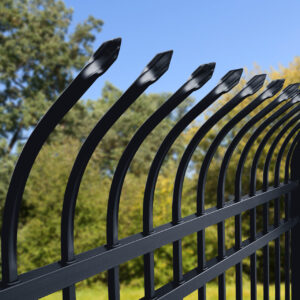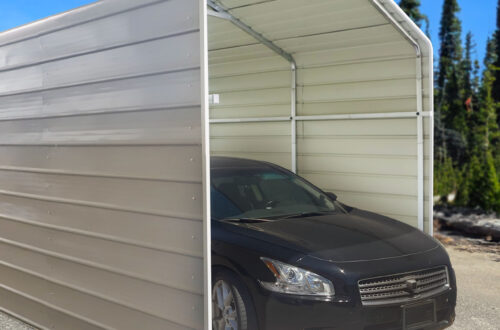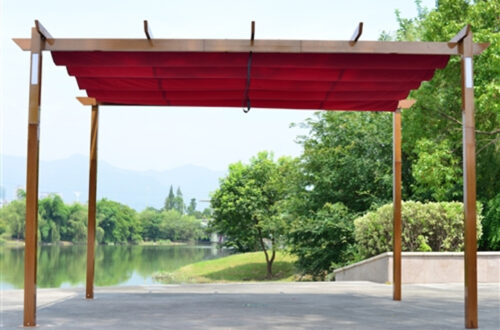From an enhanced sense of privacy to aesthetic appeal, fences offer a host of benefits for homeowners and residents. And much like all aspects of a home, fences require maintenance to look their best and “perform” their functions.
Whether you have vinyl fencing, a wrought-iron-style fence, a cedar fence, or a chain link fence, maintaining and repairing your unit can help it last longer.
But if your regular or privacy fence is new or you’re new to possessing one, how can you increase its longevity?
While plenty of homeowners hire outside help to keep their fences in pristine condition, the art of proper fence maintenance is far less complex than you might imagine and can easily be done yourself. All you need is time, patience, and the right tips, tricks, and tools in your home improvement arsenal.
The Benefits of Fence Maintenance
Even the most observant among us may take our fences for granted. Whether it’s a stylish white fence complete with a garden gate or a metal fence with trellises of flowers, we adore the way our fences look and the privacy and security they afford us.
Fences can also seem less pressing of a home-maintenance issue than, say, a hot water heater on the fritz. Indeed, all too frequently, our fence’s condition only comes to our attention when they’re in disrepair. Not only can this be costly and time-consuming, but it’s also unavoidable in most cases.
Consider, then, the benefits of fence maintenance:
- Increases protection – You might have a hole at the bottom of your regular privacy fence as a result of recent flooding or your pet’s digging habits. Or perhaps a few of the panels blew down in the latest storm. Whatever the case may be, a damaged fence translates to animals potentially entering your yard or your own escaping.
- Improves safety – A damaged fence isn’t just unsightly: it can also be a safety hazard. A broken railing, for instance, may be dangerous if it’s near your driveway or the road, while a splintered fence may increase your children’s and pets’ risk of injury.
- Augments privacy – If you had a fence installed, the privacy provided was likely a primary reason. A fence on the precipice of collapsing can undo these efforts.
- Cost-effectiveness – We all know that “an ounce of prevention is worth a pound of cure,” particularly when it comes to our health and the health of our homes and their structures. Maintaining the integrity of your fence is far less pricey—in terms of both money and time—than replacing it.
- Curb appeal – Curb appeal tends to be used by real estate agents, whereas you might be in your forever home. Nonetheless, a flawed fence—whether it’s a warped wooden fence or a rusted-out metal fence—can be a point of contention with your partner, family, and neighbors. In contrast, a well-maintained, beautiful fence can elevate your home’s allure and amplify the attractiveness of your neighborhood.
Persuaded you should add proper fence maintenance to your list of to-dos?
Here’s how to get started.

#1 Schedule Maintenance
As noted above, it can be all too easy to overlook a fence, especially in the middle of winter when it’s draped in snow. Schedule maintenance and fence repair reminders on your calendar to stay on top of your fence’s condition. Ideally, you should walk the perimeter of your fence once a month so that you can immediately take care of issues before they worsen.
Both metal and wooden fences should have maintenance duties performed every six months. That said, if you live near the ocean and own a metal fence, which may be prone to corrosion, you might want to perform maintenance every three months. The same goes for places that see an abundance of moisture.
#2 Clean Your Fence
It’s impossible to gain a full picture of your fence’s condition if it’s covered in dust, dirt, and debris. Follow these steps to get it squeaky clean:
- Using a broom, remove any cobwebs, insects, acorns, nests, leaves, rubbish, and any other debris that has accumulated on your fence.
- Hose off the fence and gently scrub it with a soft sponge dipped in warm, soapy water. Alternatively, you can use a pressure washer at a low setting.
- For wood fence maintenance, you may want to use the same cleansing concoctions you use on your wooden furniture, such as vinegar and mild detergent, oil-based soaps, or linseed oil. If you’ve purchased wood fencing panels or a wood fencing kit, you can also check with the manufacturer to ensure you don’t inadvertently harm the material’s finish.
- Address any imperfections—like stains—with a scrub brush.
- Rinse your fence thoroughly with clean water.
- If you have an ornamental fence, apply a coat of gel wax or sealer to protect it from the sun’s rays (and the elements in general).
Naturally, you’ll have to clean your fence in sections. So, set aside a few hours to clean it, depending on the size of your fence.
#3 Perform a Thorough Inspection
With your fence clean, you’ll have a better idea of the particular tasks you’ll need to perform. Specifically, keep an eye out for the following:
- Scratches and chips
- Flaking paint
- Cracks
- Places of weakness, such as sagging or leaning areas on a wooden fence
- Broken slats and posts
- Rust
- Bent hardware
- Missing caps
- Termites and other infestations
Take note of more substantial aspects that need to be repaired and plan to take care of them as soon as possible—either on your own or with the assistance of a professional.
#4 Manage Spots of Rust
Different types of metal fencing need cleaning and rust-proofing to keep them looking their best. Ornamental, metal, and chain-link fences are at risk of corrosion, which can jeopardize their durability and impact their longevity. Part of metal fence maintenance is ensuring you stay on top of rust before it spreads.
Take care of rust immediately with these tips:
- Use a fine metal wire brush or sandpaper to whisk away the rust. Wash and rinse.
- Apply a rust converter. The type you use hinges on the material your fence is composed of; wrought-iron or galvanized steel fences, for example, call for phosphoric and tannin-based rust converters.
- With either a brush or a spray, apply a coat of primer and top it off with a coat of oil-based paint in a matching color. You can also galvanize steel and iron fences with a zinc coating, which may increase their lifespans.
#5 Address Your Fence’s Aesthetics

For wooden fences, it’s best to apply a seal immediately after it’s built. Regardless, you’ll want to do all you can to maintain the beauty (and strength) of your wooden fence. After washing:
- Inspect your fence for any rough spots, and use a sander to restore its smoothness.
- If you discover any cracks or holes, use a putty knife to apply a wood filler.
- Replace any nails that have become loose.
- If your wood is stained, apply a fresh coat of stain. Most wood stains include a sealer, which saves you a step and gives a fence its enviable glossiness.
- If your fence is painted, touch up places that have become faded. Typically, experts recommend repainting an entire fence every two to three years.
- Apply a wood preservative at the bottom of your fence posts to protect your wood fence from rotting.
#6 Clean and Polish (or Replace) Your Fence’s Hardware
Whether you have a wrought-iron-style fence, steel fence, or a wooden fence, your hinges, latches, and other hardware are vulnerable to damage—especially if the gate attached to your fence is frequently used.
Be sure that all of the screws are in place, and after cleaning them, use a few drops of oil to keep them lubricated and functioning appropriately. If your hardware has become corroded, make a mental note to replace them.
#7 Trim Your Trees and Shrubs
If you have a metal fence, you’re probably well aware that tree branches and shrubs can do a number to your fence and result in scratches. Tree branches on the verge of falling can also cause damage to wooden and vinyl fences, especially if the wood or vinyl’s resilience has been tested (read: it’s witnessed rain, wind, and snow after a long winter).
While small dings and scratches are practically inevitable when it comes to any outdoor structure, you can shield your fence from harm (and make your yard look polished to boot) by trimming your trees and pruning your shrubs, hedges, and any other overgrowth near your fence.
Then, bask in the appearance of your well-cared-for fence—and repeat the process when your phone dings with your fence maintenance reminder.

Find Your Fencing Needs with ALEKO
Proper and consistent fence maintenance is part and parcel of being the lucky owner of one. Fortunately, maintaining a fence and prolonging its lifespan is rather simple to perform—and you’ll be amply rewarded for your efforts with a handsome, robust fence that’ll keep you and your family’s privacy intact.
Whether you are on the hunt for a stunning driveway gate or have been dreaming of installing an elegant but durable wrought-iron-style fence, ALEKO has a wide assortment of exceptional fencing products and solutions like fence screens and metal fence panels to satisfy your wants and needs.
Check us out today to guarantee you’ll always be happy when you return home. And if you’re a beginner to fences, we’re here to guide you on everything from how to install a metal fence to answering questions like, “How much does a fence cost?”
Sources:
SF Gate. How to maintain iron fences.
https://homeguides.sfgate.com/maintain-iron-fences-47566.html
SF Gate. The best soaps for cleaning wood furniture.
https://homeguides.sfgate.com/soaps-cleaning-wood-furniture-98104.html
The Spruce. The 7 best fence stains of 2022.
https://www.thespruce.com/best-fence-stains-4772179
SF Gate. How to keep your redwood fence looking like new.
https://homeguides.sfgate.com/keep-redwood-fence-looking-like-new-64981.html






